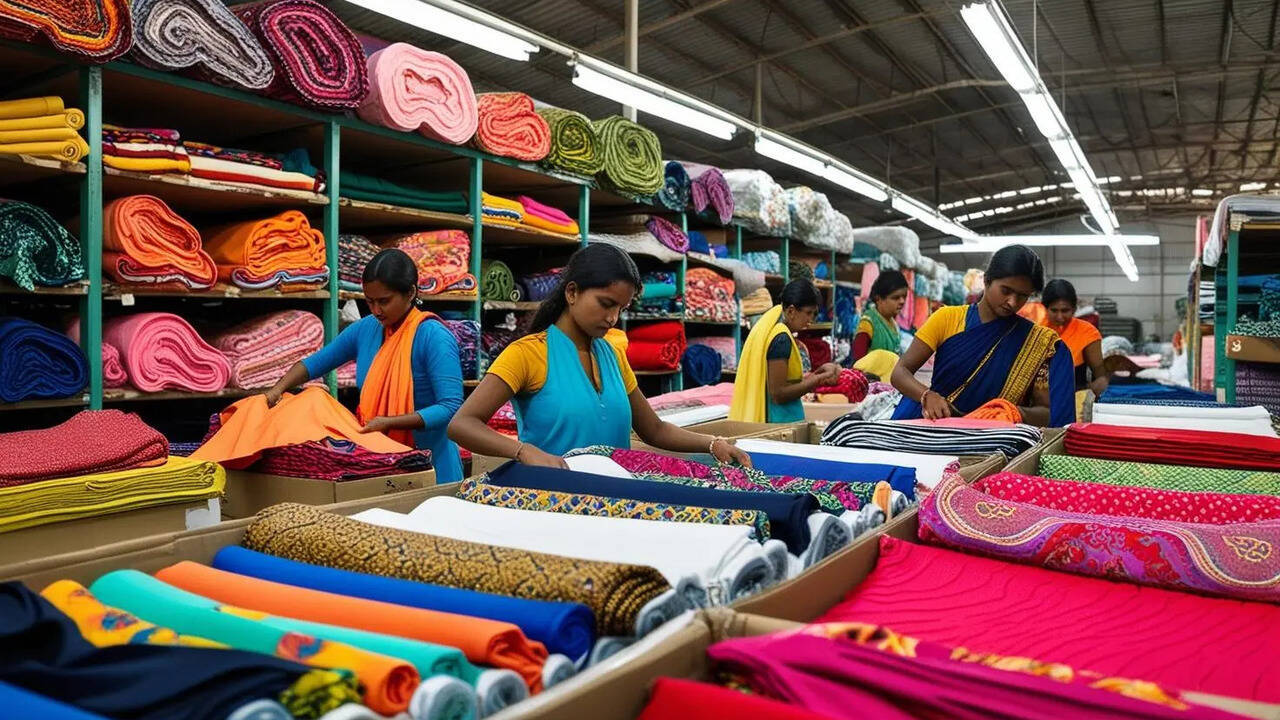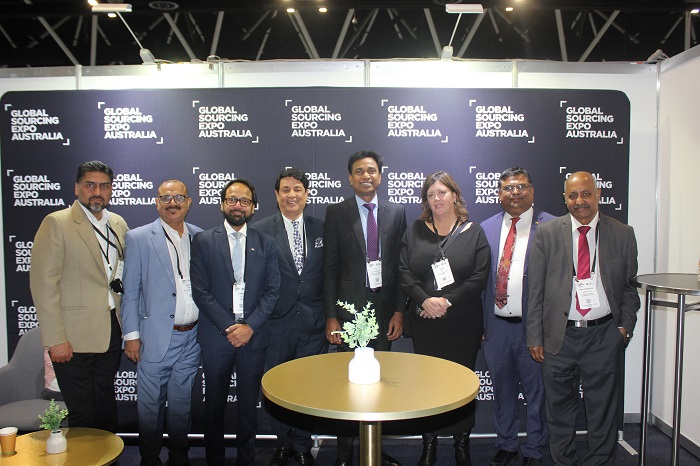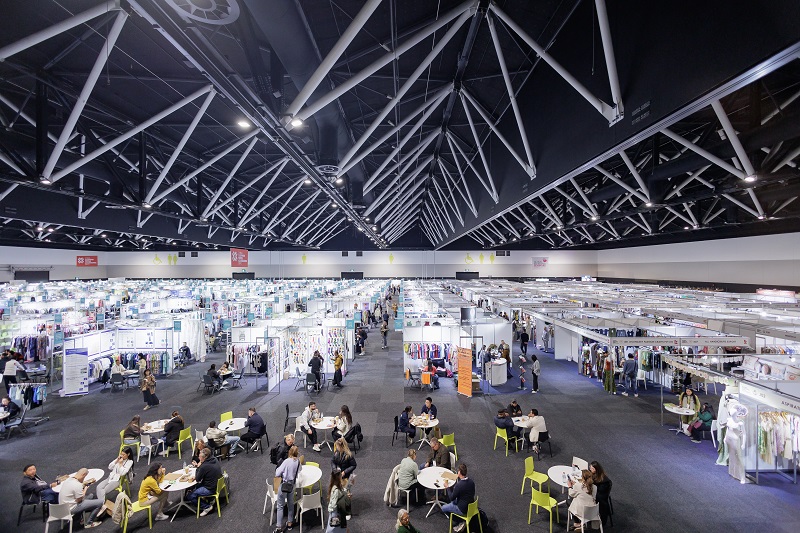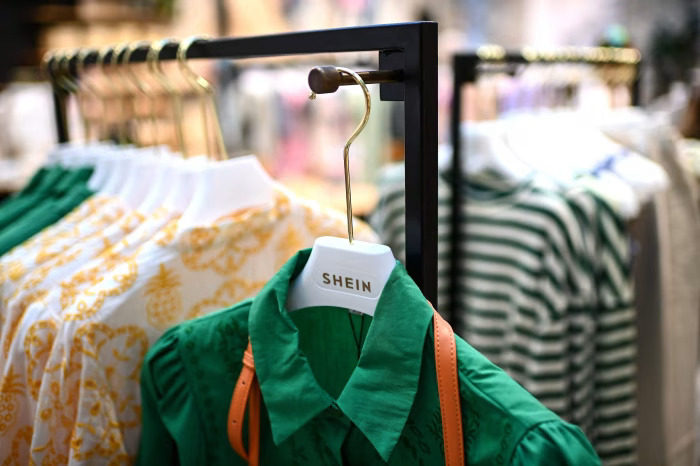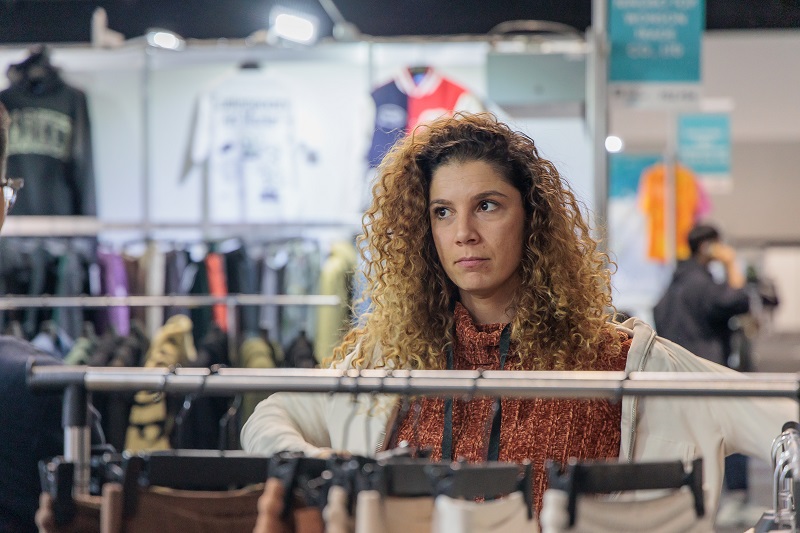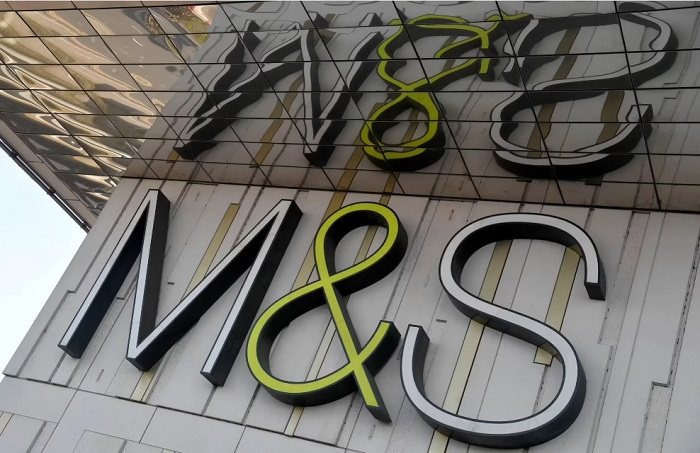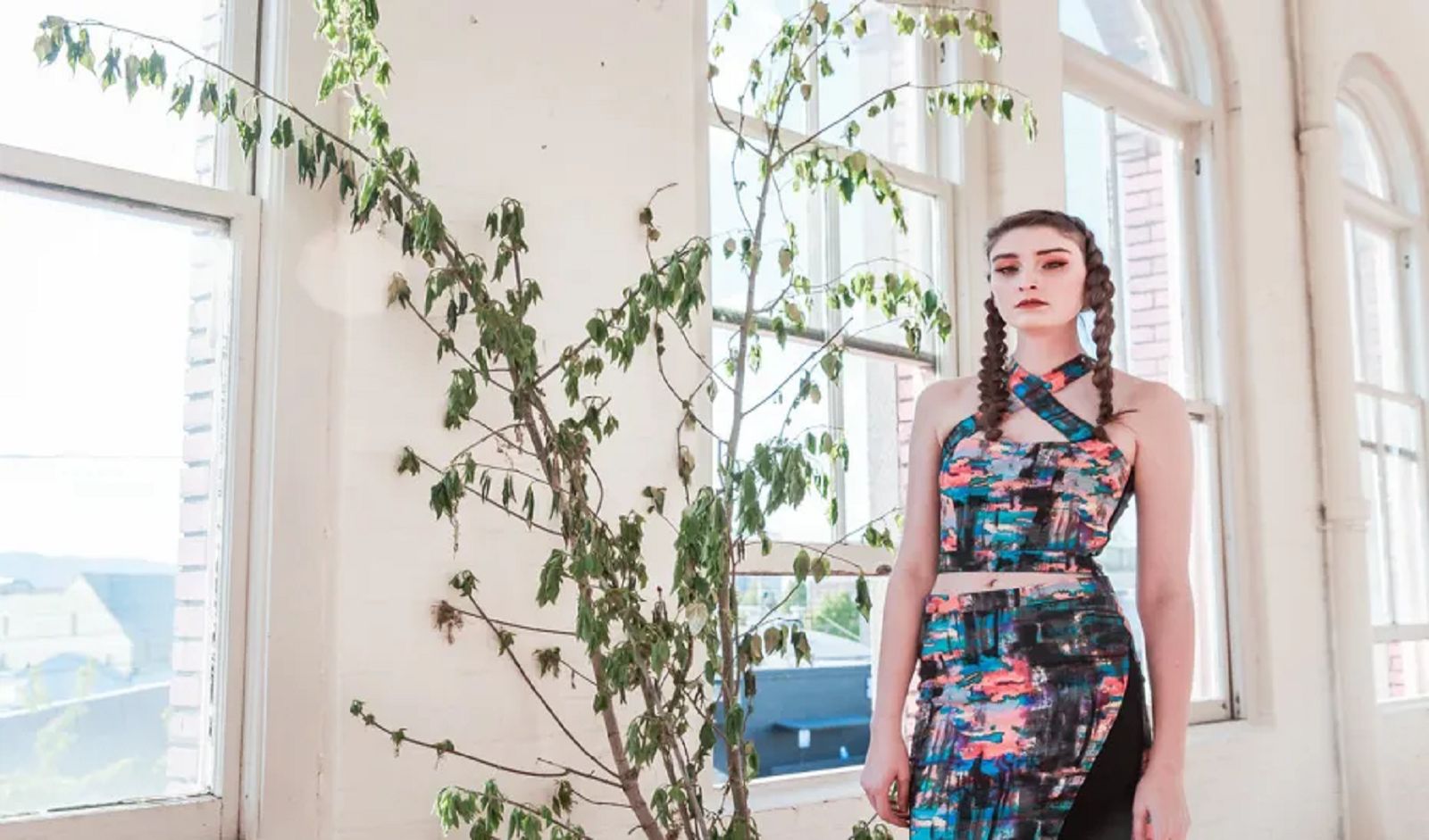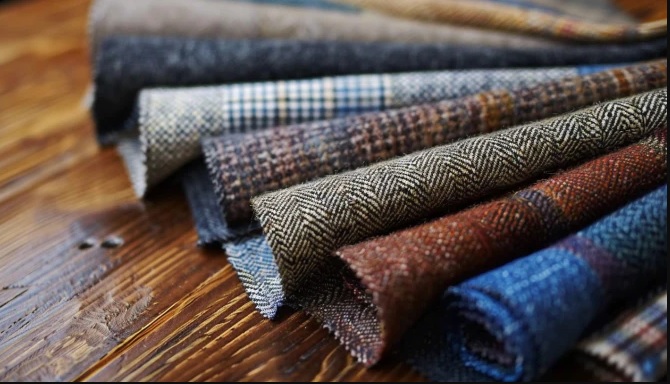FW
Edla Rajitha, Member-Managing Committee, Prajwal Farmer Producer Company, from Pathipaka village in the Shayampet Mandal of Hanumakonda, recently commended farmers across Syamampeth, Geesugonda, Regonda and Parthagir Mandal for practicing H&M Better Cotton Initiative (BCI).
Speaking at a two-day Impact Panel Training session in Turkey, Rajitha informed, a global program focused on making cotton production more sustainable, the H&M Better Cotton Initiative is being implemented by 15, 563 Prajwal farmers in collaboration with WWF India.
At its recently concluded 2025 Conference, nonprofit organization, Better Cotton announced that it's on track to become a regenerative standard by next year.
This strategic shift will help boost their existing environmental protection goals and improve the working conditions for cotton farming communities. The new regenerative standard will also enable Better Cotton to establish guidelines focused on actively enhancing and restoring natural resources within agricultural and related ecosystems.
Eva Benavidez Clayton, Senior Director-Demand and Engagement, Better Cotton, emphasizes, there is a need to adopt approaches that go beyond simply mitigating or reducing harm. It is important to incorporate methods that actively restore the environment, she highlighted further stating, Better Cotton estimates, it will finalize the remaining steps to achieve regenerative standard status within the next 12 months.
Better Cotton is currently updating its criteria to secure this standard. The organization is also collaborating with its program partners to implement the standard and develop an outcomes-based reporting framework.
Building on Better Cotton's already recognized field-level standard, this move will ensure that farmers meeting their criteria adopt widely accepted regenerative practices, Clayton further noted.
Nitish Mishra, Industries, Bihar recently inaugurated a premium bag manufacturing unit for High Spirit Commercial Ventures (Priority Bags) at the Muzaffarpur Textile Park. This new facility significantly contributes to the state's industrial growth.
Spanning 48,000 sq ft, this facility boasts an annual production capacity of 840,000 vegan leather bags. It's expected to generate over 8,000 direct and indirect employment opportunities, providing a substantial boost to job creation in Muzaffarpur and surrounding districts. The factory is fully equipped with more than 3,500 advanced sewing machines, ready to engage young people and skilled artisanal workers.
With this addition, the High Spirit Group now operates four factories in Bihar, achieving a combined production capacity of 1.8 million bags per year within the state.
Hailing the initiative as a prime example of the ‘Make in Bihar’ model, Mishra highlighted it as a testament to growing investor confidence in the region. He emphasized on the state government's ongoing efforts to refine its industrial policies, aiming to make Bihar a more attractive investment destination and enhance local economic self-reliance.
A key aspect of this new unit is its commitment to sustainability and ethical production, exclusively utilizing vegan and eco-friendly raw materials. The factory is also focused on adhering to international grading compliance, further aiding the fashion industry in its journey toward environmental responsibility.
This opening follows another recent development in Muzaffarpur's industrial landscape. Bihar Chief Minister Nitish Kumar recently inaugurated a bag manufacturing unit valued at Rs. 37 crore (approximately $4.44 million USD) for Cosmos Lifestyl. Established under the Bihar Textiles and Leather Policy 2022, this unit is spread across 5 acre and also aims to foster industrial development and increase employment opportunities in the region.

Viscose, often dubbed ‘artificial silk’ earlier, has a long and complex history in the textile industry. A regenerated cellulose fiber, it's made from wood pulp or other plant materials, offering a luxurious drape, breathability, and a soft handfeel that often mimics natural fibers. However, traditional viscose production has faced numerous environmental challenges. Today, the industry is witnessing a shift, with cutting-edge developments in viscose manufacturing pushing towards enhanced comfort, functionality, and, critically, sustainability, making it a truly high-performance natural-look alternative.
A quest for better fibers
Viscose (also known as rayon in North America) was first developed in the late 19th century as a more affordable and accessible alternative to silk. Its natural cellulose base gives it many desirable properties akin to cotton and silk, including good absorbency, softness, and excellent dyeability. However, the conventional viscose production process, known as the "xanthate process," is chemical-intensive and can be highly polluting.
The current wave of innovation aims to overcome these limitations by improving environmental footprint. Which involves, addressing the chemical usage and water pollution associated with traditional methods. Another innovation being looked at is enhancing performance that is boosting properties like wet strength, wrinkle resistance, and durability, which were traditionally weaknesses of viscose. Achieving even more refined and consistent appearances and textures that rival high-end natural fibers is also an ongoing process.
Developments shaping the future of viscose
The evolution of viscose has led to the emergence of advanced generations of regenerated cellulosic fibers, primarily Modal and Lyocell. These represent significant leaps in both performance and sustainability:
Modal: Also considered second generation viscose is developed from beech wood pulp, Modal fibers undergo a slightly different treatment after spinning that enhances their strength and durability, particularly their wet strength. This makes them more resilient to washing and less prone to shrinkage or distortion than traditional viscose. Modal is renowned for its exceptional softness, smooth handfeel, and excellent moisture absorption, often described as having a "silky" or "cotton-like" feel.
Lyocell seen as third generation viscose is widely considered the most sustainable of the regenerated cellulosic fibers, Lyocell is produced using a "closed-loop" solvent-spinning process. This method, often using N-Methylmorpholine N-oxide (NMMO) as a solvent, recycles up to 99% of the water and chemicals, significantly reducing environmental impact. Lyocell fibers (famously branded as Tencel by Lenzing AG) are known for their strength, breathability, superior moisture management (they absorb moisture more uniformly than cotton), and a very soft, smooth handfeel. They also exhibit good drape and wrinkle resistance.
Advanced pulp sourcing: Emphasis is increasingly placed on sourcing wood pulp from sustainably managed forests (e.g., FSC or PEFC certified) that utilize renewable resources like eucalyptus, beech, and bamboo, which require less water and pesticides than cotton.
Enhanced finishing technologies: Beyond fiber development, innovative finishing processes are being applied to all types of viscose fabrics to further improve their handfeel, drape, and add specific functionalities such as anti-microbial properties or enhanced cooling effects.
Fiber modifications: Research continues into modifying fiber cross-sections and surface structures to further control luster, texture, and moisture transport, mimicking natural fibers with even greater precision.
Inherent challenges
However, the journey to perfecting viscose has involved tackling several inherent challenges:
Environmental impact of conventional viscose: The traditional viscose process uses hazardous chemicals like carbon disulfide and sulfuric acid, leading to air and water pollution if not properly managed. This is being overcoming with development and widespread adoption of closed-loop processes for Modal and especially Lyocell dramatically reduce chemical discharge and water consumption. Companies are investing heavily in cleaner production technologies and sustainable forest management certifications for their pulp sources.
Wet strength and dimensional stability: Conventional viscose loses significant strength when wet and can be prone to shrinking or stretching. However, now Modal fibers are engineered with improved wet strength, making them more durable for washing. Lyocell, with its highly uniform fiber structure, boasts even greater strength and excellent dimensional stability, leading to less shrinkage and better shape retention.
Wrinkling: Like cotton, conventional viscose can wrinkle easily. But advanced finishing treatments and improved fiber structures in Modal and Lyocell contribute to better wrinkle recovery and resistance, making garments easier to care for.
Cost and scalability of sustainable alternatives: The newer, more sustainable processes for Modal and Lyocell can be more expensive than traditional viscose production. As demand for sustainable textiles grows, economies of scale are improving. Major manufacturers are continuously optimizing their processes to reduce costs while maintaining high environmental standards. Brand and consumer demand for eco-friendly products also supports the higher price points for these advanced fibers.
Traceability and transparency: Ensuring that the wood pulp used comes from truly sustainable and non-deforesting sources. Therefore, certifications like FSC (Forest Stewardship Council) and PEFC (Programme for the Endorsement of Forest Certification) are crucial. Companies like Lenzing are leading the way with advanced traceability systems, including fiber identification technologies, to ensure ethical and sustainable sourcing throughout the supply chain.
Commercial successes
The market has embraced advanced viscose fibers, driven by consumer demand for comfort, aesthetics, and sustainability.
Lenzing AG (Tencel): Lenzing's Tencel brand (which encompasses Lyocell and Modal fibers) is a global leader and perhaps the most prominent success story. Their fibers are widely adopted by major fashion and home textile brands for a variety of applications, from activewear and denim to luxury apparel and bedding. Lenzing highlights the closed-loop production, traceability, and softness of their fibers.
Tencel in denim: Tencel Lyocell has revolutionized the denim market. Traditionally, denim could be stiff and heavy. By incorporating Tencel™ Lyocell, brands like Levi's, G-Star RAW, and Reformation have created denim that is incredibly soft, breathable, and drapes beautifully, without compromising the rugged aesthetic. This has opened up new possibilities for comfortable and luxurious denim products. In fact, Lenzing reported strong growth in their cellulosic fibers segment, driven by the increasing demand for sustainable and high-performance materials. Their strategic focus on specialty fibers like Tencel and Lenzing Ecovero (a more sustainable viscose option) has been key to their success.
Birla Cellulose (Livaeco by Birla Cellulose): A major player in the global cellulosic fiber market, Birla Cellulose has invested significantly in sustainable technologies. Their Livaeco brand represents a range of sustainable viscose, modal, and lyocell fibers produced with lower environmental impact, including reduced water and GHG emissions. They offer full traceability from forest to fashion. Birla Cellulose has partnered with numerous international and Indian brands to integrate Livaeco fibers into their collections, emphasizing softness, fluidity, and eco-consciousness.
EcoVero Viscose (Lenzing AG): While Lyocell and Modal are advancements, Lenzing also offers EcoVero viscose, which is a more environmentally responsible version of conventional viscose. It uses less water and emits fewer greenhouse gases compared to generic viscose, with certified sustainable wood sourcing. This provides a more sustainable option for brands still seeking the specific characteristics of viscose.
Table: Viscose developments for enhanced performance and sustainability
|
Development Category |
Mechanism |
Benefits (Natural Fiber Mimicry/Performance) |
Commercial Impact |
|
Modal Fiber Production |
Modified spinning, higher tenacity from beech wood pulp |
Enhanced wet strength, improved dimensional stability, super softness, silky handfeel |
Widely used in underwear, activewear, bedding; superior to conventional viscose |
|
Lyocell Fiber Production |
Closed-loop solvent spinning (e.g., NMMO) with high solvent recovery |
Exceptional strength (wet & dry), superior moisture management, soft drape, cotton-like feel, excellent breathability |
Premium segments like activewear, denim, luxury apparel, bedding; leading sustainable option |
|
Sustainable Pulp Sourcing |
FSC/PEFC certified wood, renewable resources (eucalyptus, bamboo) |
Reduced deforestation, lower ecological footprint |
Foundation for eco-friendly claims, demanded by conscious brands |
|
Advanced Finishing |
Specialized treatments (e.g., enzymatic, softening) |
Enhanced handfeel, improved wrinkle recovery, added functionalities (e.g., anti-microbial) |
Elevates perceived luxury and functional performance |
|
Traceability Systems |
Fiber identification technology, blockchain solutions |
Guarantees ethical and sustainable supply chain, builds consumer trust |
Increasingly important for brand transparency and credibility |
Comparative properties of conventional viscose, advanced viscose (Modal/Lyocell), and natural fibers The table below illustrates how the properties of advanced viscose fibers bridge the gap between traditional viscose and popular natural fibers, offering a compelling blend of characteristics.
Table: Comparative properties of regenerated cellulosic and natural fibers
|
Property |
Conventional viscose (Rayon) |
Advanced viscose (Modal/Lyocell) |
Natural fibers (e.g., cotton/silk) |
|
Handfeel |
Soft, smooth, fluid, "silky" |
Very soft, smooth, often "cotton-like" (Lyocell) or "silky" (Modal), luxurious |
Soft, breathable, varied (e.g., crisp cotton, smooth silk) |
|
Drape |
Excellent, fluid |
Excellent, fluid, natural-like |
Excellent, graceful |
|
Breathability |
Good |
Excellent, superior moisture management and wicking |
High (cotton), moderate (silk) |
|
Moisture Absorption |
High, absorbs into fiber structure (can feel heavy when wet) |
Very high, more uniform absorption, quick-drying (especially Lyocell) |
High (cotton), moderate (silk), absorbs into fiber structure |
|
Wet Strength |
Low, significantly weakens when wet |
Improved (Modal), High (Lyocell), maintains strength when wet |
Moderate (cotton), Low (silk) |
|
Wrinkle Resistance |
Moderate to Low, prone to wrinkling |
Improved, better wrinkle recovery |
Variable (cotton wrinkles easily, silk less so) |
|
Durability / Abrasion Resistance |
Moderate |
Good to Excellent (especially Lyocell) |
Variable (cotton durable, silk delicate) |
|
Appearance |
Smooth, lustrous (can be dull) |
Smooth, often has a natural luster, can be tailored for specific aesthetics |
Natural variations, unique luster |
|
Pilling Resistance |
Moderate (can pill with wear) |
Good, improved over conventional viscose |
Variable (wool can pill, cotton less so) |
|
Environmental Impact (Production) |
High (chemical-intensive, water pollution if untreated) |
Significantly Reduced (closed-loop systems, sustainable forestry, lower water/energy for Lyocell/Modal) |
Variable (water/land use, pesticides for cotton; sheep impact for wool) |
|
Cost |
Affordable |
Moderate to High (due to advanced processes and sustainability) |
Variable (cotton affordable, silk expensive) |
|
UV Resistance |
Fair |
Fair to Good |
Variable (silk poor, cotton fair) |
|
Care Instructions |
Machine washable (delicate cycle), can shrink |
Easy care, often machine washable, less prone to shrinkage |
Variable (cotton easy, silk/wool delicate) |
Viscose growth path is firmly set on sustainability and advanced performance. Further innovations are expected in developing new bio-based feedstocks beyond traditional wood pulp, exploring fibers from agricultural waste, and continuing to refine the closed-loop systems for even greater efficiency. The goal is to solidify viscose's position as a truly sustainable and high-performance fiber that not only rivals but, in many applications, surpasses the comfort and aesthetics of conventional natural fibers, without the associated environmental burdens of older production methods. As the industry continues to prioritize circularity and responsible manufacturing, advanced viscose fibers will play a pivotal role in shaping the future of textiles.
Woolmark has joined forces with COLOURizd, a leader in dry textile colouring, to launch a breakthrough yarn dyeing technology called QuantumCOLOUR for wool and wool blends. The innovation, which will debut at Pitti Immagine Filati in Florence from July 1-3, offers a radically more sustainable and cost-effective alternative to conventional wool dyeing.
QuantumCOLOUR drastically cuts resource usage, requiring only 0.5 litres of water per kilogram of yarn compared to 60-120 litres in traditional dyeing. The process eliminates the need for bleaching, pre-treatment, and wastewater discharge. Only a wetting agent and a bluesign-certified pigment binder are used, making it a low-impact, closed-loop system suitable even for facilities without water treatment infrastructure.
“After extensive testing on Merino wool and wool blends, we realised COLOURizd has created something truly revolutionary for the wool industry,” said Julie Davies, General Manager, Processing Innovation & Education Extension at Woolmark. “This process delivers beautiful colour depth while significantly reducing environmental impact.”
Unlike conventional methods that use caustic soda, acids, salts and large amounts of water, COLOURizd’s pigment is injected into the yarn fibre bundle, creating soft textures and a wide range of hues. The technology has been validated by Woolmark on 100 per cent Merino and blends with cotton, Tencel, and nylon, across yarn counts from 30/2NM to 80/1NM. Tests confirm excellent colourfastness and wear durability on yarns, fabrics, and garments.
COLOURizd CEO Jennifer Thompson noted, “Woolmark represents the gold standard in wool, and this partnership will help us bring our low-impact process to new global markets. We're excited to extend sustainable performance to wool manufacturers worldwide.”
The two companies will showcase the innovation at booth I/20 during the upcoming Pitti Filati event in Florence.
Leading home textiles manufacturer, Welspun Living has collaborated with the National Skill Development Corporation (NSDC) to launch a large-scale skilling and employment initiative. This program is specifically designed to cultivate a skilled workforce for operator-level positions within India's thriving textile sector.
In its initial pilot phase, the program will involve training and certification of 1,000 candidates. A key focus of this initiative will include ensuring it attracts at least 50 per cent women participation with particular emphasis on individuals from underrepresented regions, including India's Northeastern states and Uttarakhand. The company has invested Rs 4.25 crore in this impactful program.
The company’s partnership with NSDC highlights its unwavering commitment to inclusive and sustainable growth, states Dipali Goenka, Managing Director and CEO, Welspun Living. By specifically targeting women from the North East and Uttarakhand, Welspun not only addresses critical skill gaps but also unlocks pathways to economic independence, fostering self-worth, and creating a lasting generational impact, he adds.
To be conducted at Welspun's state-of-the-art facilities in Anjar and Vapi, Gujarat, this comprehensive training program will incorporate a blended learning approach, combining essential classroom-based instruction with practical, hands-on, on-the-job training. It will cover key technical areas such as proficient machine handling, optimized production processes, stringent quality control measures, adherence to safety protocols, and the development of crucial soft skills.
Upon the successful completion of the program, all trainees will receive a joint certification from both the NSDC and Welspun, guaranteeing them captive employment within Welspun's extensive textile operations.
Emphasizing the braoder impact of this initiative, Rajesh Jain, Chief Human Resources Officer at Welspun Living, says, through its collaboration with NSDC, Welspun aims is to cultivate a more inclusive and future-ready textile workforce, thereby making a substantial contribution to national economic growth.
A prominent textile manufacturer, Gini Silk Mills registered a 52.67 per cent Y-o-Y decline in its net profit to Rs 0.33 crore during Q4, FY25 as against Rs 0.70 crore in the corresponding quarter last year.
This substantial decline in the company’s profits suggests potential pressures on margins, possibly due to higher operational costs, increased raw material prices, or a less favorable product mix during the quarter.
The company’s net sales too declined by 5.12 per cent to Rs 11.03 crore during the quarter ending March 2025 as against Rs 11.62 crore in the corresponding quarter last year. This sales dip could be attributed to various factors, including evolving market demand, increased competition, or shifts in consumer spending patterns within the textile sector.
However, despite the headwinds in sales and net profit, Gini Silk Mills’ Earnings Before Interest, Taxes, Depreciation, and Amortization (EBITDA) increased by 1.12 per cent to Rs 0.90 crore from Rs 0.89 crore in March 2024. This marginal growth in EBITDA indicates the operational efficiency maintained by the company at the core level despite revenue challenges.
Consequently, the company’s Earnings Per Share (EPS) decreased to Rs 0.06 in March 2025, from Rs 0.13 in March 2024. This decline in EPS directly reflects the decrease in net profit attributable to shareholders, indicating a reduced return for investors during the quarter. Metakeys: Gini Silk Mills, Q4 FY25, net profit, sales dip, EBITDA growth, textile industry,
Escalating tensions between Israel and Iran are further compounding the already significant challenges faced by textile exporters in Panipat. A cornerstone of India's home furnishings export sector, these companies were already grappling with the fallout from global trade disruptions and the ongoing Russia-Ukraine war. This latest conflict has injected further uncertainty, disrupted existing orders, and significantly slowed the inflow of new business, indicate local sources.
A city renowned for its home furnishing textile exports, Panipat recorded approximately $927 million in exports in 2021. The United States stands as Panipat's largest export market, followed by various European countries. The increasing geopolitical risks and associated tensions are directly impacting demand in these crucial markets. While Israel typically imports textiles valued between $59.9 million and $83.8 million annually from Panipat, direct trade with Iran is limited. However, broader regional instability is causing major logistical headaches and dampening overall market sentiment.
Recent US tariffs have introduced additional complications. While exporters initially received a three-month exemption for pending and shipped orders, buyers are now pushing for price renegotiations. Exporters are reportedly under pressure to slash prices by 5 per cent to 10 per cent or even more, resulting in substantial financial losses for many local businesses.
Industry representatives recently reported a sharp decline in orders. They fear an inability to meet their obligations while operating on severely diminished profit margins. The cumulative effects of global conflicts and shifts in trade policies are creating a seriously disruptive environment for international trade. This leaves Panipat's textile sector facing an unstable and strained export landscape.
Signaling a robust expansion, India's apparel sector is projected to grow at a CAGR of 11 per cent from FY24-29. This forecast aligns with the sector's historical performance, having expanded at an 11 per cent CAGR from FY20-24, mirroring India's nominal GDP and private final consumption expenditure (PFCE) growth, according to a new report by HSBC Global Investment Research.
The branded apparel sector expanded at a CAGR of 16 per cent from FY12-24. This growth was largely fueled by increasing market penetration and enhanced affordability. Looking ahead, non-formal wear is expected to lead growth within various apparel sub-segments.
Activewear is predicted to witness the highest growth at a 25 per cent CAGR from FY24-29, a trend stemming from the post-COVID-19 shift towards casual wear. Organized value retail is also poised for substantial growth with a 16 per cent CAGR (FY24-29), benefiting significantly from the ongoing transition away from the unorganized sector.
However, the apparel market remains highly competitive, facing disruptions from e-commerce, the entry of foreign brands, and rapidly changing fashion cycles, the report.
The report identifies two primary business models within the sector: Format-focused (retail outlets with distribution primarily limited to the company's own stores and e-commerce) and Brand-focused (an asset-light business model but working capital-intensive due to a diverse distribution mix). The format model has an advantage due to its broader customer base and better control over their supply chains, the report states. Additionally, formats are better suited to navigate the emerging risks in the apparel space, it adds.
Meanwhile, India’s Textile and Apparel (T&A) exports expanded by 7.4 per cent growth in April 2025 compared to the same month last year. This positive momentum was primarily driven by the strong performance of the apparel segment, which registered a robust 14.43 per cent Y-o-Y growth, according to an analysis of data released by the Ministry of Commerce.
In April 2025, Indian textile exports grew by 2.61 per cent from April 2024, while apparel exports increased by 14.43 per cent to $1.37 billion during the month as against $1.2 billion in April 2024.

The textile industry is increasingly focusing on natural fibers and circularity, with new research and initiatives pointing towards a more sustainable future for fashion. Efforts are underway to redefine existing perceptions of fiber production and implement groundbreaking technologies for environmental responsibility.
Recalibrating cotton's water footprint
New global research from the International Cotton Advisory Committee (ICAC) challenges long-standing assumptions about cotton's water usage. The study, analysing cotton production data from 271 locations in 38 countries, reveals that cotton's irrigation water use is significantly lower than commonly believed. While cotton occupies approximately 2.92 per cent of the world's arable land, it accounts for only 2.76 per cent of total global agricultural irrigation water. The average irrigation water used globally for cotton production was found to be 2,346 liters per kg of lint. Importantly, the majority of the water used in cotton cultivation, around 74 per cent, originates from rainfall, not irrigation.
This revised understanding is attributed to methodological improvements and the widespread adoption of water-efficient irrigation systems like furrow, sprinkler/pivot, and drip irrigation, which have largely replaced traditional flood irrigation methods.
Table: Global cotton water use (Litres/kg lint)
|
Water Type |
Average Amount (Litres/kg lint) |
Percentage |
|
Irrigation |
2,346 |
26% |
|
Total (incl. Rainwater) |
8,927 |
100% |
Advancing organic cotton and traceability
The Organic Cotton Accelerator (OCA) has reached a milestone, with over 100,000 farmers enrolled in its Farm Programme for the 2024-25 cotton season. During the 2023-24 season, 82,264 farmers in India and Pakistan, including 35,070 in-conversion farmers, participated across 106,010 hectares, earning an average premium of 8 per cent above market price. The program has grown its network to include 18 brands, 14 implementing partners, and 11 seed partners. By the end of the season, 92 per cent of available organic cotton produced under the program was procured at higher prices by participating brands.
A detailed life cycle assessment (LCA) of Indian cotton production, commissioned by the OCA and conducted by South Pole, provides new insights into the environmental performance of organic versus conventional cotton systems across India's major growing regions. Organic systems performed better in almost every category, with the greatest relative improvements seen in hybrid and irrigated contexts. For instance, organic cotton under rainfed conditions showed a 35 per cent lower climate impact compared to conventional rainfed systems, while in irrigated contexts, the gap widened to 36 per cent, and in hybrid systems, it reached 62 per cent. These differences are primarily attributed to reduced fertilizer inputs and lower on-field emissions of nitrous oxide.
Meanwhile, the U.S. Cotton Trust Protocol and Supima have partnered to increase cotton supply chain traceability, providing brands and retailers with unprecedented access to farm-level data. This collaboration leverages USDA's permanent bale identification system and TextileGenesis's traceability platform.
Table: Yields in organic cotton production
|
System Type |
Yield (kg/ha) |
|
Conventional-Rainfed |
1,509 |
|
Organic-Rainfed |
1,503 |
|
Conventional-Irrigated |
1,343 |
|
Organic-Irrigated |
1,278 |
|
Conventional-Hybrid |
1,245 |
|
Organic-Hybrid |
1,846 |
Notably, under hybrid irrigation, organic cotton shows a higher yield than conventional cotton.
Challenges and innovations in textile recycling
New research highlights a critical factor affecting cotton textile recycling: the degree of aging in the waste material. Studies show the mechanical quality of regenerated cellulose fibers significantly declines with increased thermal aging of source textiles. For example, fibers made from unaged textiles had a tensile strength of 204.83 megapascals, while those from textiles aged at 200°C fell to just 47.50 megapascals. This presents a dilemma between extending garment lifecycles through reuse and ensuring suitability for recycling.
Addressing these complexities, recycling technology companies are working to increase recycled content without sacrificing product quality and durability. RE&UP, for instance, produces Next-Gen recycled materials from both post-consumer and industrial textile waste, engineered to meet the performance standards of virgin materials. Their proprietary technology can recycle the majority of polycotton blends, facilitating the transition to a circular fashion model.
Brands like Wrangler are also actively involved in circular denim initiatives, exploring the delicate balance between durability and the use of natural and recycled fibers. Their participation in the Accelerating Circularity initiative aims to create regional systems for textile-to-textile recycling. Wrangler acknowledges that mechanical recycling can degrade fiber quality over time, making chemical recycling a promising but more investment-intensive alternative. The brand aims for 10-20% recycled cotton content without compromising durability and is focused on using mono-materials to ease recycling processes.
Sustainable practices in cotton and silk production
A recent study highlighted the environmental impacts of producing cotton T-shirts in Peru, identifying cotton production and the use phase of the garment as the most impactful stages. Energy, fertilizers, and water use were found to be the main environmental burdens, with irrigation water in cotton fields contributing 97 per cent of the Water Scarcity Footprint. The study suggests optimizing water use, reducing reliance on fertilizers, and promoting better garment use practices to mitigate these impacts.
In India, a socio-economic study in West Bengal revealed that sericulture is transforming lives, particularly for rural women, by providing economic empowerment and reducing marginalization. Women's involvement in various stages of silkworm rearing has led to increased household incomes and greater decision-making power. Self-help groups play a crucial role in providing access to resources, training, and collective support, leading to more efficient operations and preserving traditional knowledge.
The global silk industry is also exploring a transition to a circular economy model. A study by Politecnico di Milano identified six key areas for embedding circular practices: waste utilization, circular design, consumer education, technological advancement, traceability, and supportive government regulations. Repurposing silk production waste into fertilizers, animal feed, cosmetics, or spun silk products is a major opportunity.

